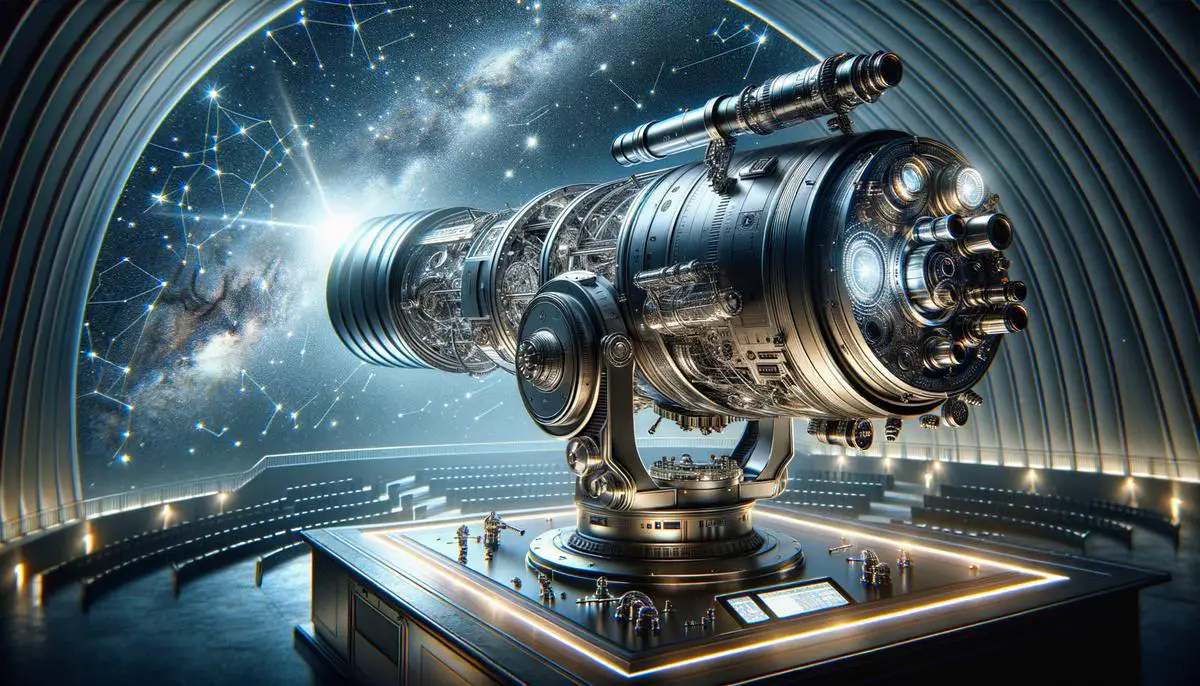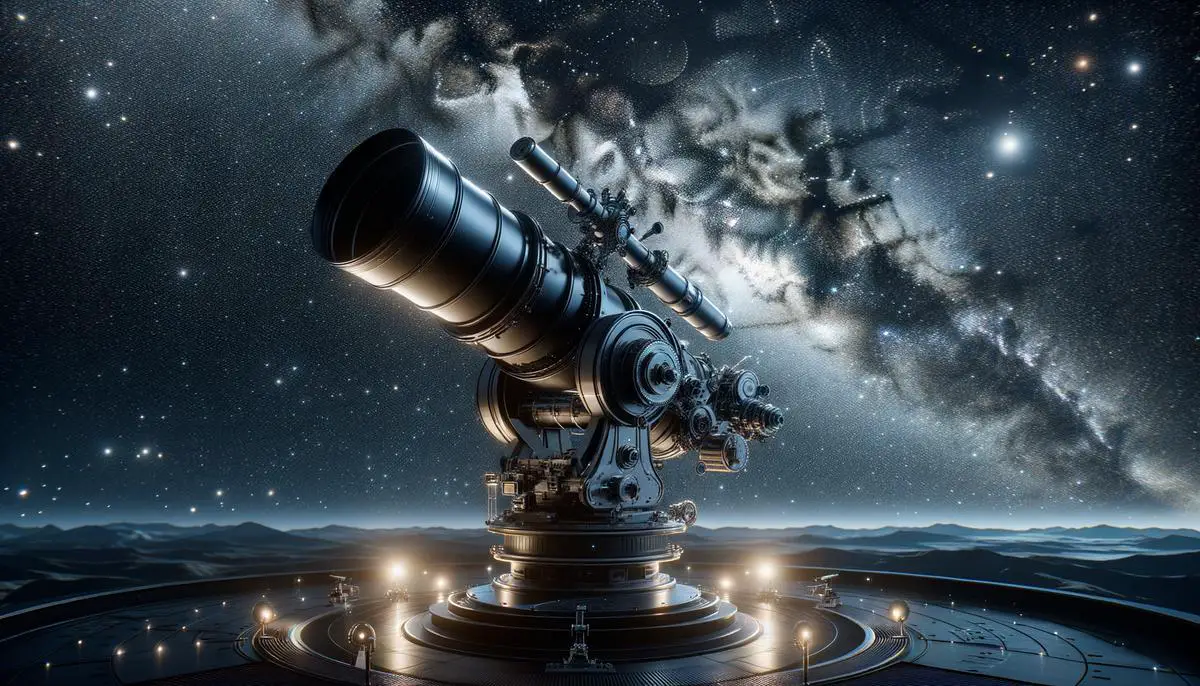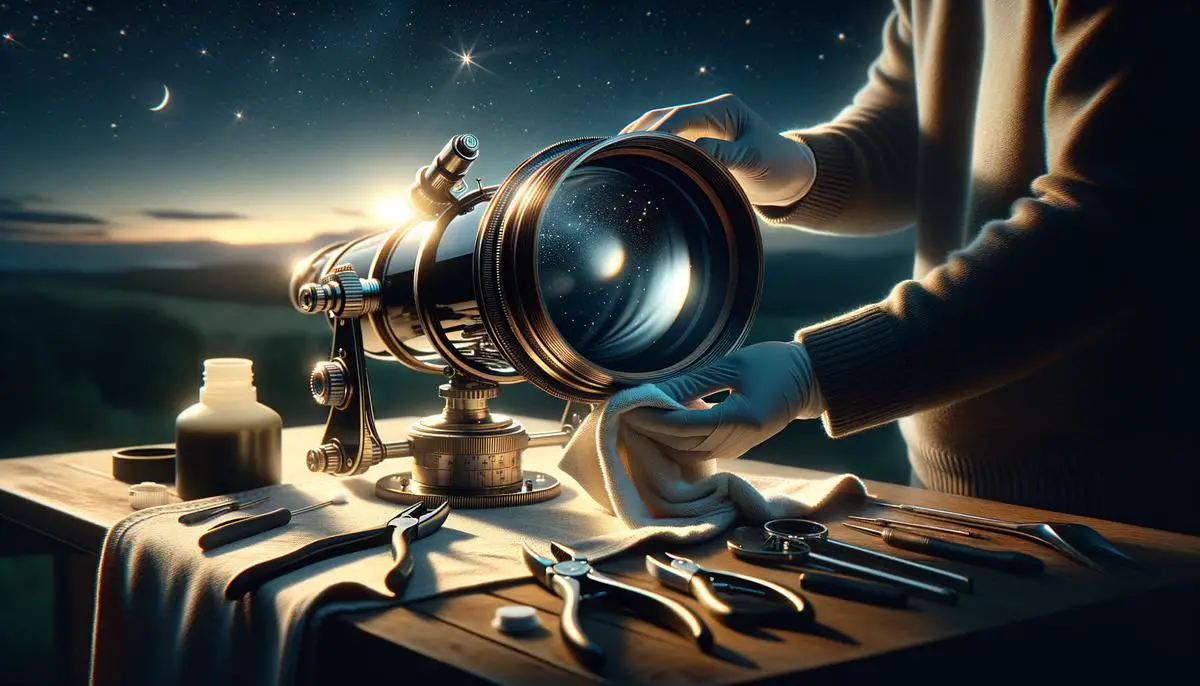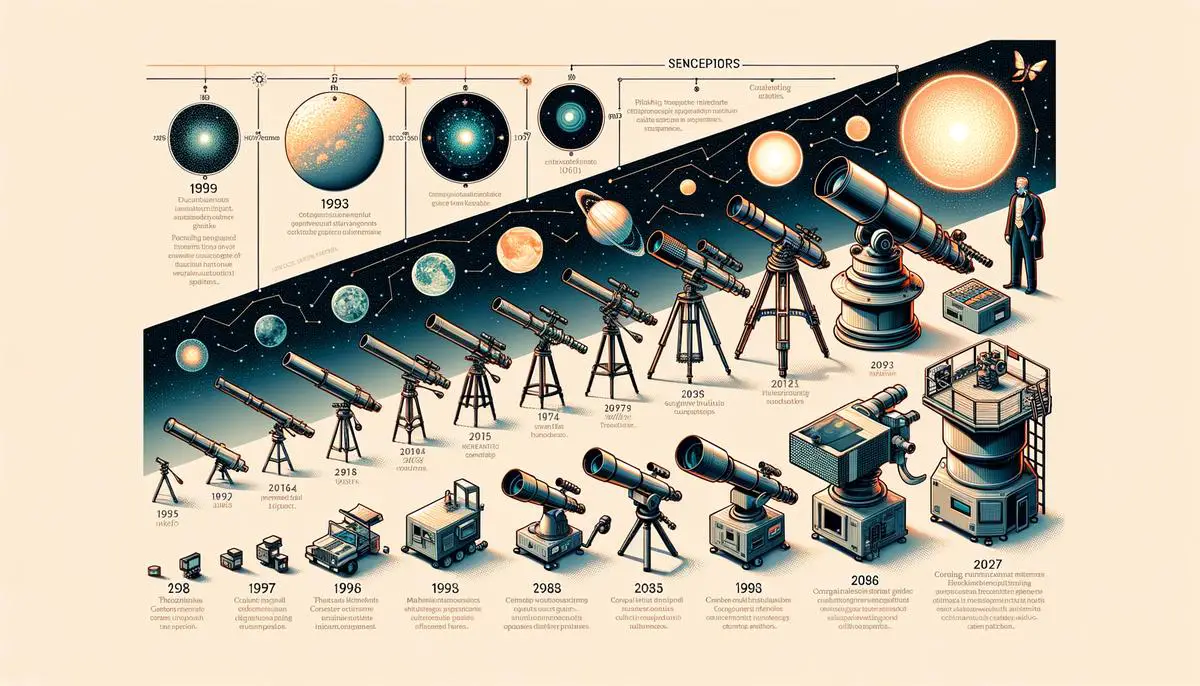Telescopes serve as our windows to the vast universe, providing glimpses of distant stars, galaxies, and celestial phenomena. Enhancing the resolution and capabilities of these instruments is crucial for expanding our understanding of the cosmos. This article explores the innovative technologies and approaches that drive advancements in telescope technology, shedding light on how these developments enable us to see the universe with unprecedented clarity.
Understanding Telescope Technology
Modern Telescopes: Achieving High Resolution
In today’s rapidly advancing world, telescopes play a crucial role in unraveling the mysteries of the universe. Achieving high resolution in these instruments is essential for clearer and more detailed observations of celestial objects. The journey of enhancing telescope resolution involves several key techniques and technologies.
The heart of a modern telescope’s capability to obtain high-resolution images lies in its optical system. This system primarily consists of mirrors and lenses, designed to gather as much light as possible from distant stars and galaxies. The larger a telescope’s mirror or lens, the more light it can collect, allowing it to see farther and more distinctly. For instance, the Hubble Space Telescope, orbiting Earth, utilizes a 2.4-meter diameter mirror to capture stunningly clear images from the depths of space.
Adaptive optics represents another leap forward in telescope technology. This innovative method corrects the distortions in the images caused by Earth’s turbulent atmosphere. Telescopes on the ground have to look through the atmosphere, which behaves somewhat like a moving, distorted window, blurring the light from distant stars. Adaptive optics systems use flexible mirrors that adjust their shapes many times per second to counteract these distortions, providing sharper images. An example of this technology in action is seen in the Very Large Telescope in Chile, which has achieved remarkable clarity in its astronomical observations.
Interferometry, a technique used by arrays of telescopes, further elevates resolution. By combining the signals collected by multiple telescopes spread over a large area, interferometry effectively creates a giant telescope the size of the entire array. This method allows astronomers to achieve unprecedented detail in observing celestial bodies. The Event Horizon Telescope, which captured the first image of a black hole, relied on interferometry, linking radio dishes across the globe to act as one enormous telescope.
Digital image processing also plays a vital role. The data captured by telescopes, especially those in space like the Hubble, need to be meticulously processed. Advanced computer algorithms enhance these images, removing noise and amplifying details, which makes faint objects visible and sharpens overall image quality.
In conclusion, achieving high resolution in modern telescopes is a complex endeavor that involves both cutting-edge technology and innovative techniques. From larger mirrors and lenses to adaptative optics, interferometry, and sophisticated digital processing, each step in the process ensures that our view into the cosmos is clearer than ever before. This relentless pursuit of higher resolution opens new windows into understanding the universe, its origins, and potentially, our place within it.

Choosing the Right Telescope for Star Gazing
When diving into the world of astronomy and considering the purchase of a high-resolution telescope, enthusiasts are met with a complex decision-making process beyond the initial excitement. Key factors emerge as critical to ensuring the investment aligns with both the practicalities of use and the aspirational goals of the stargazer.
First, an essential aspect is the aperture size of the telescope. Larger apertures allow more light to enter, significantly improving the clarity and detail of observed objects. Especially for dim or distant celestial bodies, the aperture size can make or break the viewing experience. However, larger apertures often mean a more substantial, heavier, and generally more expensive telescope. Balancing the desire for high resolution with these practical constraints requires thoughtful consideration.
Mount type is another pivotal choice. Equatorial mounts, while more complex, offer precise tracking of celestial objects across the sky, which is invaluable for long exposure astrophotography or detailed observation sessions. Altazimuth mounts, on the other hand, are simpler and more intuitive, suitable for beginners or those who prioritize ease of use. Each mount type has its specific application and learning curve, impacting the overall enjoyment and utilization of the telescope.
Considering the observing location is equally critical. Light pollution in urban environments severely limits the capability of even the most advanced telescopes. Thus, enthusiasts must assess their typical observing spots and decide whether a portable setup is necessary to escape the city lights or if their backyard provides a sufficiently dark sky. The trade-off between portability and power is a constant consideration, with larger, high-resolution telescopes being less amenable to frequent transportation.
Lastly, the cost and additional equipment must be factored into the decision. High-resolution telescopes, especially those with advanced features like computerized control systems, can represent a significant financial commitment. Additionally, accessories such as lenses, filters, and cameras for astrophotography can add to the overall investment. Enthusiasts should thoughtfully consider their budget and the extent of their commitment to the hobby before making a selection.
In sum, while the allure of peering deeper into the cosmos with a high-resolution telescope is undeniable, the journey to selecting the right equipment entails a comprehensive evaluation of various technical and practical considerations. Balancing desires with realities, future astronomers can navigate these decisions, ensuring a fulfilling exploration of the night sky.

Best Practices for Maintaining High-Resolution Telescopes
Maintaining a telescope for optimal performance is crucial for any astronomy enthusiast, ensuring that each stargazing experience is as clear and rewarding as possible. Effective maintenance encompasses several key areas, including regular cleaning, proper storage, and routine checks and adjustments of the telescope’s components. By adhering to the following guidelines, telescope owners can keep their equipment in top condition, ready for every celestial observation.
Firstly, cleaning the telescope’s optics—its mirrors and lenses—is a delicate task that demands attention and care. Always use a soft, lint-free cloth or brush to gently remove dust particles without scratching the surface. For smudges or fingerprints, a solution of water and isopropyl alcohol applied with a cotton swab can be effective. It’s crucial to avoid spraying any liquid directly onto the optics, as excess moisture can seep into crevices and cause damage.
The telescope’s exterior also requires maintenance. Wiping down the body and stand with a dry cloth removes dust and grime that can build up over time. This not only preserves the telescope’s appearance but also prevents foreign particles from getting inside the optical tube.
Proper storage is another key element of telescope maintenance. When not in use, the telescope should be covered and stored in a cool, dry place. Avoid leaving the telescope in areas prone to extreme temperature changes, as this can lead to condensation and potentially harm the optical elements. Investing in a sturdy, padded case can offer extra protection against bumps and dust, especially for those who travel frequently with their equipment.
Additionally, routine checks of the telescope’s alignment and calibration are necessary to ensure it performs well. Mirrors and lenses can shift slightly over time or after transport, affecting the telescope’s ability to focus and align correctly. Regularly check the alignment of the optical system and consult the manufacturer’s guidelines for adjustment procedures.
For those utilizing computerized telescopes, keeping the software up to date is essential. Manufacturers often release updates that enhance functionality or introduce new features, improving the overall user experience. Ensure that your telescope’s firmware is current, and take advantage of any updates that are available.
Finally, understand your telescope’s mechanics. Familiarize yourself with how to adjust and tighten components as needed, such as the mount or eyepiece. Loose parts can lead to instability and affect the quality of observations. However, avoid over-tightening, as this can cause wear or damage to the threads and components.
By adopting a proactive approach to maintenance, enthusiasts can extend the life and performance of their telescopes. Regular cleaning, careful storage, and routine checks not only safeguard the telescope but also enrich the observing experience, bringing the wonders of the universe into clearer view. Whether a seasoned astronomer or a passionate beginner, the joy of discovery begins with a well-maintained telescope.

Innovations in High-Resolution Telescope Technology
Emerging Trends and Innovations in Telescope Technology
As we gaze into the vast expanse of space, the tools at our disposal to explore the cosmos continue to evolve. The field of telescope technology, in particular, is witnessing a wave of advancements and innovations that promise to further our understanding of the universe. This article sheds light on some of the emerging trends transforming how we observe celestial bodies and phenomena.
One significant development in telescope technology is the advancement in sensor technology. Modern telescopes are being equipped with more sensitive and sophisticated sensors, capable of detecting lower levels of light and capturing high-definition images from further away. These advanced sensors not only improve the quality of the images but also allow astronomers to detect fainter objects that were previously unseen, opening up new realms of the universe for exploration.
Another trend is the integration of artificial intelligence (AI) and machine learning algorithms into telescope operations. AI is being used to automate the analysis of vast amounts of data collected by telescopes, identifying patterns and objects of interest much faster than humanly possible. Machine learning algorithms are also improving the way telescopes are pointed and focused, optimizing their performance and enabling more precise observations.
The miniaturization of telescope technology is also gaining momentum. Innovators are developing smaller, more compact telescopes that maintain a high level of functionality. This miniaturization not only makes telescopes more accessible to amateur astronomers but also enables the deployment of swarms of small telescopes in space. These swarms can work together to cover larger areas of the sky or focus on a single target from different angles, providing a wealth of data that was previously unattainable.
Space-based telescopes are set to benefit greatly from advancements in propulsion and power systems. More efficient propulsion systems are making it possible to position telescopes in more distant and strategically advantageous orbits. At the same time, improvements in solar power technology and the development of nuclear-powered systems are ensuring that these telescopes can operate for longer durations without the need for resupply missions, thus extending their operational lifetimes and capabilities.
Lastly, the democratization of space observation through public-private partnerships marks a pivotal shift in telescope technology. More companies and research institutions are collaborating on the development and deployment of next-generation telescopes. This collaborative approach not only accelerates technological advancements but also opens up space exploration to a wider community, fostering a new era of discovery and innovation.
In summary, the field of telescope technology is experiencing a renaissance, with new trends and innovations emerging at a rapid pace. From sensor advancements and AI integration to the miniaturization of telescopes and the expansion of space-based observatories, these developments are reshaping our ability to explore and understand the cosmos. As technology continues to advance, the future of astronomy promises to bring even more groundbreaking discoveries and insights into the mysteries of the universe.

The relentless pursuit of technological innovation in telescope design and functionality propels us further into the depths of space, unlocking mysteries that have captivated humanity for centuries. As we stand on the brink of new discoveries, these advancements not only refine our view of the cosmos but also redefine our place within it. Through the lens of cutting-edge telescopes, the universe unfolds in all its intricate detail, inviting us to marvel at its wonders and continue our quest for knowledge.
![]()
